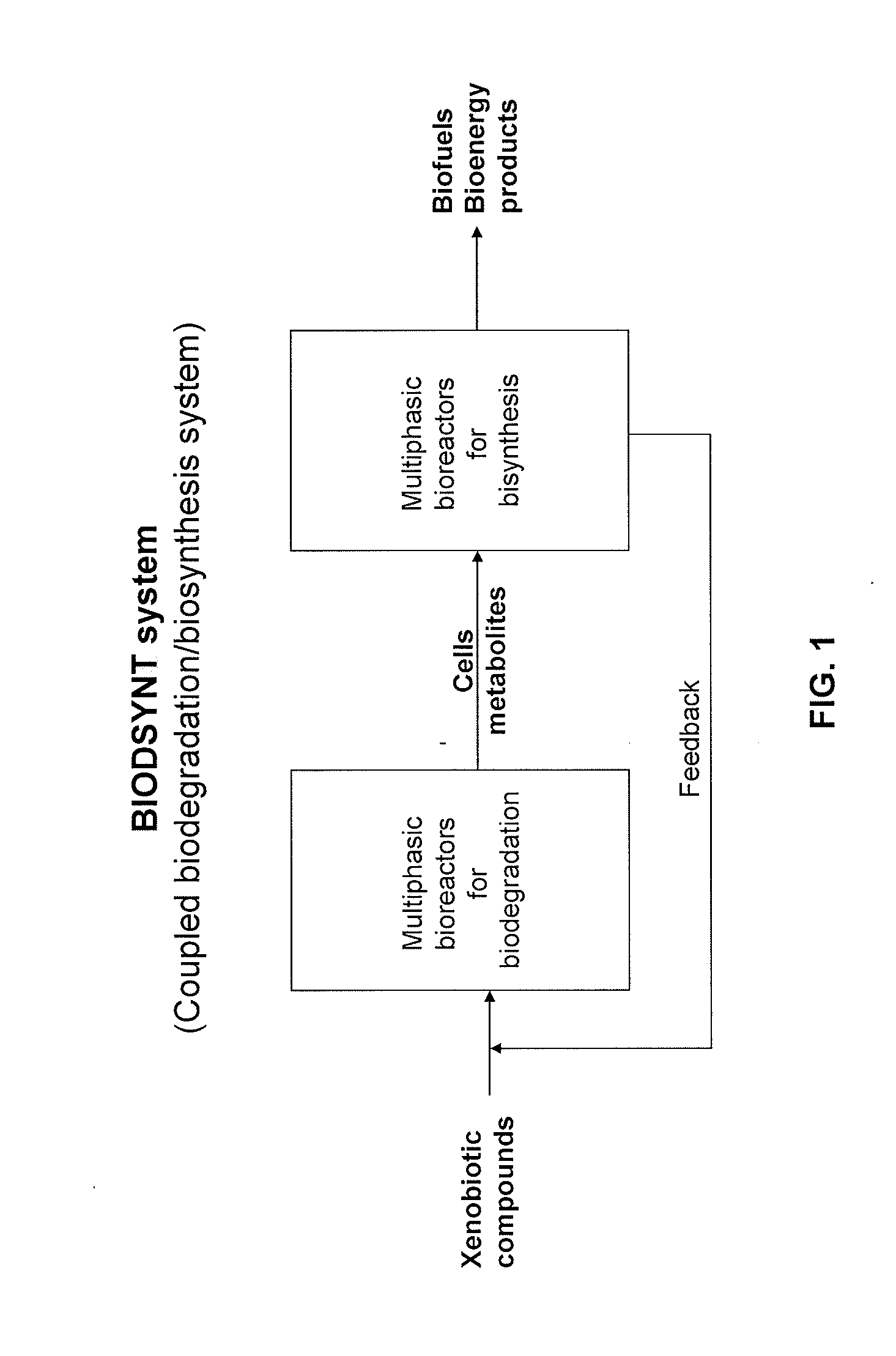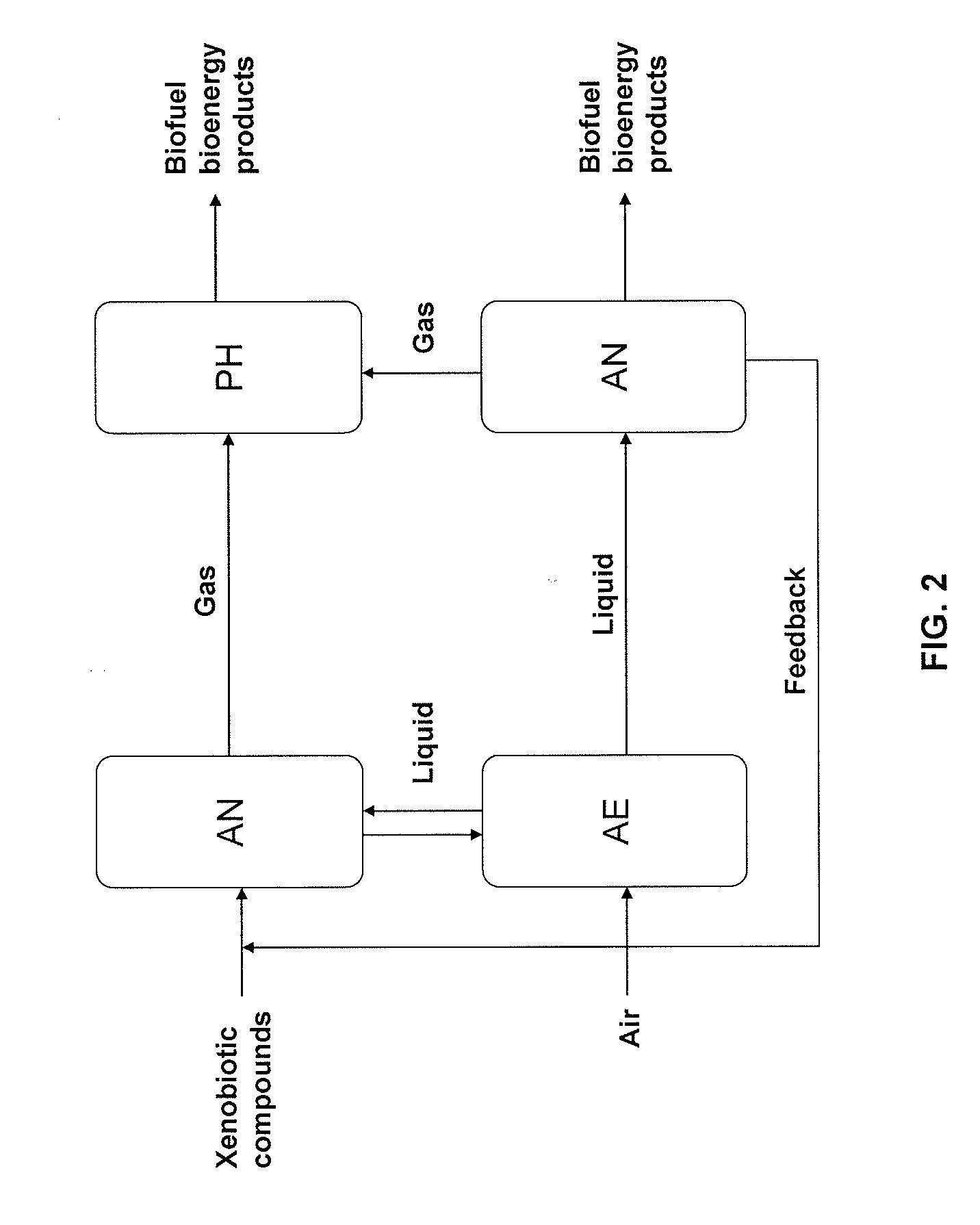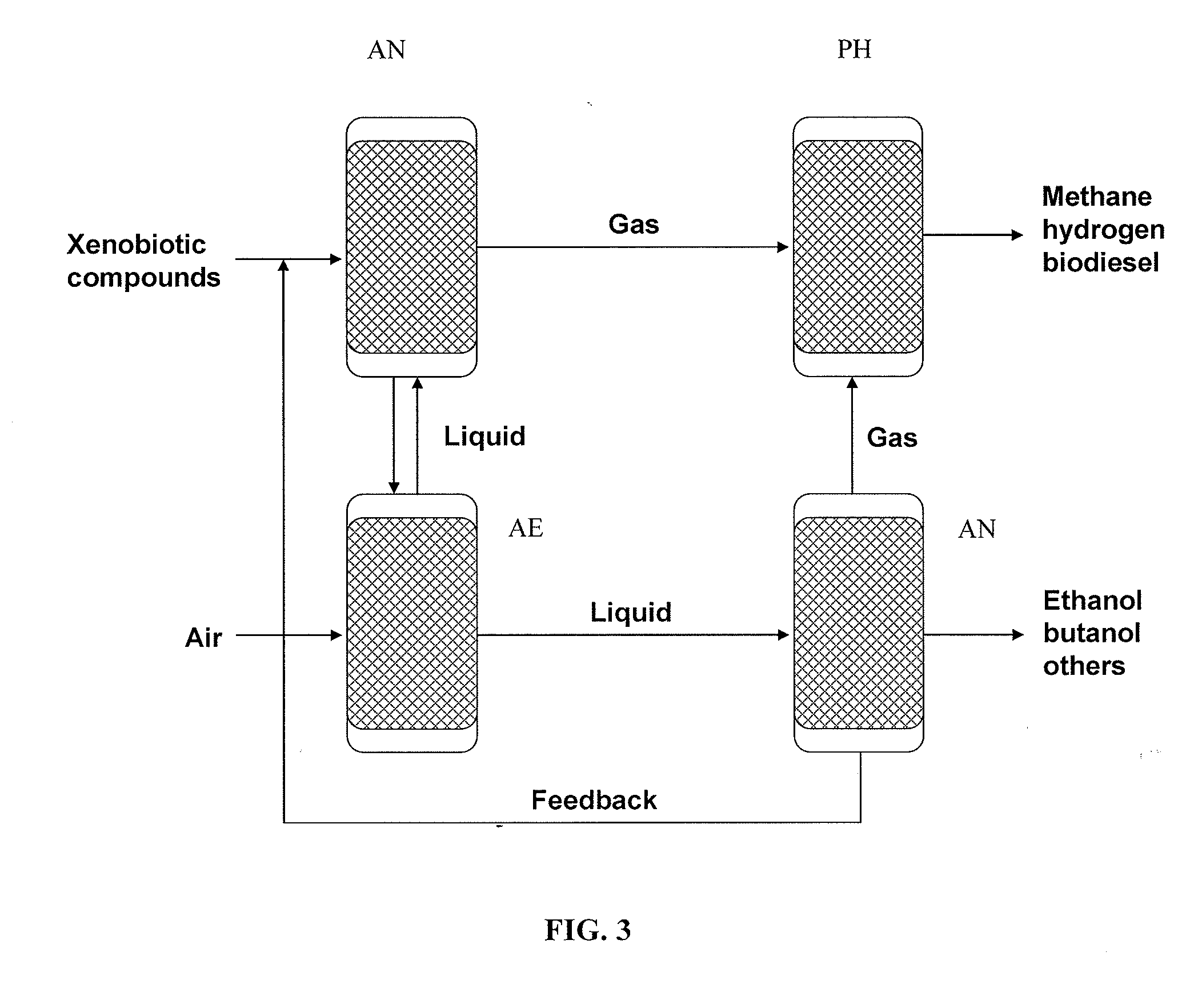Methods and systems for producing biofuels and bioenergy products from xenobiotic compounds
a technology of biofuel and xenobiotic compounds, applied in the field can solve the problems of increasing food prices, insufficient raw material sources for biofuel production, and inefficient and expensive production of biofuels and bioenergy products from these materials, so as to reduce environmental pollution and contamination, and reduce costs
- Summary
- Abstract
- Description
- Claims
- Application Information
AI Technical Summary
Benefits of technology
Problems solved by technology
Method used
Image
Examples
example 1
Coupled Biodegradation / Biosynthesis System for the Production of Methane from Recalcitrant Xenobiotic
[0097]To demonstrate that a xenobiotic recalcitrant compound can be transformed to usable biofuel products by aerobic and anaerobic biofilm bacteria cultured in multiphasic bioreactors, 3,4-Diclhorobenzoic acid (3,4-DCB) was processed using the reactor shown diagrammatically in FIG. 2 (“BIODSYNT”). 3,4-DCB is a recalcitrant xenobiotic in the environment, produced and accumulated by the partial degradation of Polychlorobiphenyls (PCBs) and other herbicides.
[0098]Bacteria attached to liquid or solid surfaces are efficient for breaking down xenobiotic compounds. Further, while aerobic and anaerobic bacteria may each have limitations in breaking down a xenobiotic compound, these limitations can be overcome by their cooperative metabolisms, that is, between both aerobic and anaerobic biofilm bacteria in a multiphasic system. This in turn permits the complete mineralization of recalcitrant...
example 2
Coupled Biodegradation / Biosynthesis System for the Production of Biofuels from Pharmaceutical Compound
[0102]As a pharmaceutical model (xenobiotic) compound, Naproxen ((+)-(S)-2-(6-methoxynaphthalen-2-yl) was used as a carbon source for the production of biofuel, and particularly methane, using the BIODSYNT system (FIG. 2, and Example 1, above). Naproxen is a non-steroidal anti-inflammatory drug (NSAID) commonly used for the reduction of moderate to severe pain, fever, inflammation and stiffness caused by a variety of conditions. Naproxen and naproxen sodium are marketed under various trade names including: XENOBID, ALEVE, ANAPROX, MIRANAX, NAPROGESIC, NAPROSYN, NAPRELAN, PROXEN, and SYNFLEX.
[0103]Using the biofim multiphasic bioreactors of Example 1, the aerobic / anaerobic bacteria were acclimated by feeding the xenobiotic in low concentrations (about 30 mg / l) to the degradation bioreactor system. The acclimation proceeded for about 2 weeks until an increase in suspended biomass was ...
example 3
Photo Bioreactor for the Production Hydrogen and Biodiesel from CO2 Effluents
[0107]The BIODSYNT system (FIG. 2) was tested for its ability to fix and use CO2, through the cultivation of a blue-green algae (cyanobacteria) in a photosynthetic bioreactor.
[0108]A culture of cyanobacterium Synechococcus sp. was inoculated in a 1 L photo bioreactor containing a basic mineral salts medium. The reactor was incubated at room temperature under 1.2 klux light intensity and a 16:8 h light:dark cycle. The cultures were subjected to CO2 at 0.5 and 1.0% (v / v) levels. The growth of culture was recorded at 5-day intervals.
[0109]Synechococcus sp. was evaluated for biomass growth, lipid content and hydrogen production. As showed in FIG. 7, more biomass was achieved at 1% CO2 than at 0.5%. In both cases, the lipids extracted to produce biodiesel was approximately 50% of the biomass. Around 150 nmol of hydrogen per gram of protein was observed when biomass was grown at 1% CO2. About half that amount was...
PUM
 Login to View More
Login to View More Abstract
Description
Claims
Application Information
 Login to View More
Login to View More - R&D
- Intellectual Property
- Life Sciences
- Materials
- Tech Scout
- Unparalleled Data Quality
- Higher Quality Content
- 60% Fewer Hallucinations
Browse by: Latest US Patents, China's latest patents, Technical Efficacy Thesaurus, Application Domain, Technology Topic, Popular Technical Reports.
© 2025 PatSnap. All rights reserved.Legal|Privacy policy|Modern Slavery Act Transparency Statement|Sitemap|About US| Contact US: help@patsnap.com



